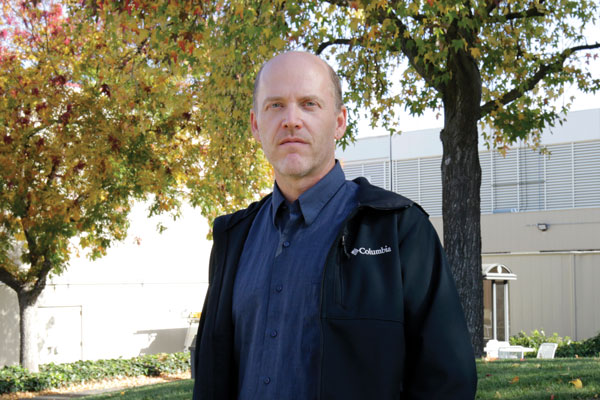
Tracy Vogler has been elected Fellow of the American Physical Society by the organization’s Topical Group on Shock Compression of Condensed Matter.
Tracy was recognized for “landmark contributions to the basic understanding of shock propagation in metals, ceramics and granular materials; for sustained service to the APS Topical Group on Shock Compression of Condensed Matter; and for leadership in the science community.”
Tracy earned a bachelor of science degree in mechanics from the Virginia Polytechnic Institute in 1992, a master’s in aeronautics and astronautics from the Massachusetts Institute of Technology in 1994, and a doctorate in mechanics from the University of Texas at Austin in 1999. After 18 months at the Army Research Laboratory in Maryland, he joined Sandia in 2001 to study experimental shock physics.
“I find it incredibly exciting because these things happen in microseconds,” Tracy said of the shock waves that come from explosions and impacts. “They are not readily observable, and the challenge of mentally conceptualizing these events and how to measure them is very stimulating. I also appreciate that what I do is relevant to the country.”
Tracy spent seven years in Albuquerque before moving to Sandia’s Livermore campus. He found out just days before the late October announcement that he was named an APS Fellow. His mentor and former Sandian, Lalit Chhabildas, and former Sandia manager Jim Asay had begun Tracy’s nomination earlier this year.
“They worked to put together the application,” Tracy said. “I am so grateful to Lalit and Jim for their guidance and friendship over the years and for what they did to have me named an APS Fellow. It’s a great honor to follow in their footsteps and those of the other Sandians — Lynn Barker, Dennis Grady, Dennis Hayes — from the previous generation who are APS Fellows and pioneers in the field of shock physics.”